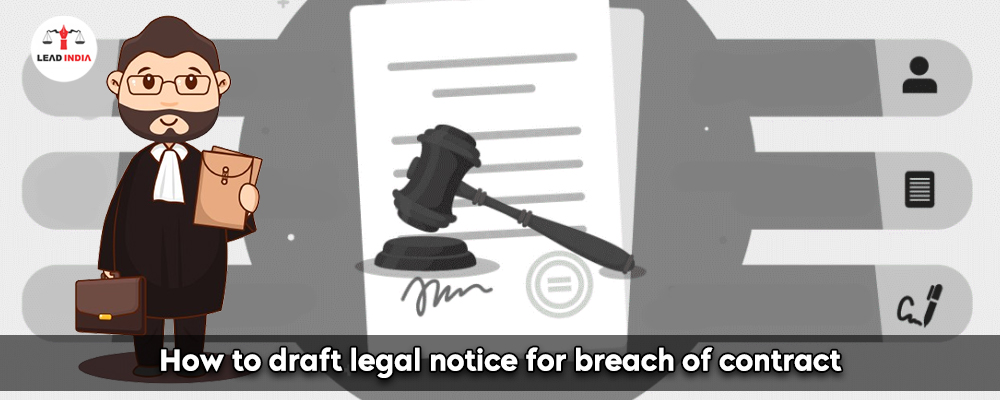The Indian Contract Act specifies the rules for performing the contract, as well as the provisions in the event of a breach of contract by either party. A breach is typically defined as the failure to perform an act required to fulfill a promise, agreement, or contract. A contract is legally binding under the Indian Contract Act, of 1872, and is followed when a contract is breached in violation of a legal duty.
A legal notice is created when a party wishes to formally inform the opponent of his or her demands or any claim from them to initiate legal proceedings against him if the demands are not met. Once the legal notice is served, the entity or individual being sued is legalized. A legal notice is intended to be a formal communication to a person or entity informing the other party of the intention to initiate legal proceedings against them, thereby making the opponent aware of the grievances against them.
A legal notice can be sent to the defaulting party following a breach of contract. Before sending a legal notice, the injured party may remind the opposite party, particularly through electronic means, of the breach and payment for damages. If the injured party does not take any action to remedy the breach despite repeated reminders, the injured party may send a legal notice.
Need A Legal Advice
The internet is not a lawyer and neither are you. Talk to a real lawyer about your legal issue

Drafting legal notice for breach of contract
An advocate issues a legal notice on behalf of his or her client. Although it is not necessary to send a legal notice through a lawyer, he or she may send one on his or her own without the assistance of an advocate. Incorporating specific legal provisions/enactments into a legal notice is also optional. The primary goal of a legal notice is to seek a settlement. It is issued to either accept or reject the settlement to file a civil suit or pursue legal remedies.
Title of the Legal Notice
The advocate/party’s letterhead should include their address, phone number, and e-mail address so that the opposing party can respond. It is not required, but it is preferable to have a reference number for the legal notice to keep track of the notice issued. This legal notice is sent via Registered A.D. or courier so that it can be tracked and notified when the defaulting party receives it. The legal notice should include a proper date so that the time to respond to it can be determined.
The first paragraph should include the client’s name and address, and if the client is a company, introduce the client and his representative.
Content of the notice
This section shall include the entire content of the notice for which it is being issued. The main body of the legal notice must include all details about the transaction and the breach. It must be carefully worded, and the entire draft notice must include information about how the parties met, how they established trust, and how they entered into the contract. The entire transaction process, as well as the reason the client believes led to the contract’s termination. After that, reminders were sent, including phone calls and e-mail reminders, which must be mentioned in the legal notice. A good draft describes the entire event in a systematic and chronological order, ending with the reminders sent to the opposition. If there are facts that may be used against the client, such incidents must be carefully drafted and incorporated or excluded from the draft. When drafting the notice, always consider the risk that could backfire on the client.
Finalizing the legal notice
The client’s demands should always be drafted and mentioned in the notice. This demand may include monetary compensation for damages and mental harassment, as well as specific contract performance to avoid a breach.
Lead India offers various legal services, including free legal advice and online information. You can talk to a lawyer and ask a legal question on various matters, including divorce, through our platform.





 Talk to a Lawyer
Talk to a Lawyer